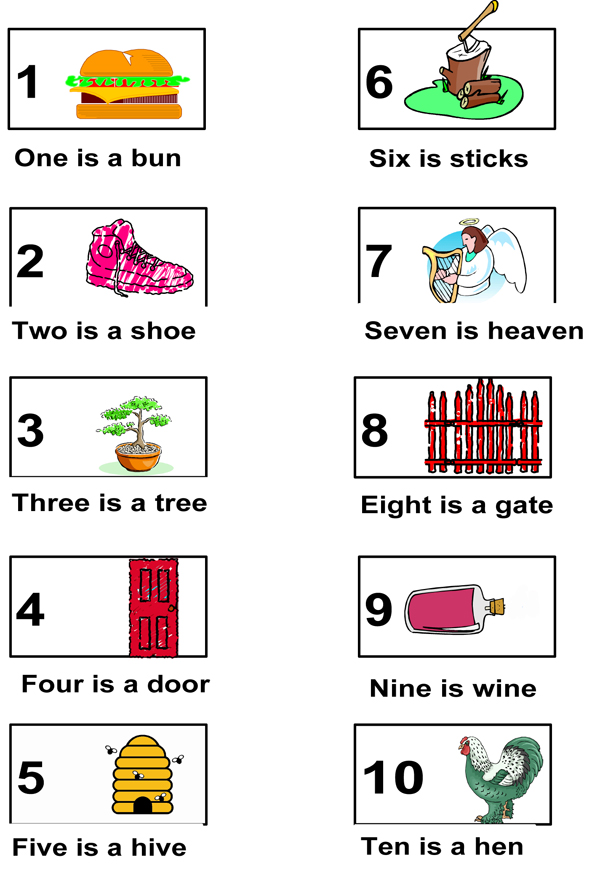Find out about the pegword mnemonic
Here are pegwords I've thought up in the Spanish language.

As with the original example, let's try it out with our cranial nerves.
En español, los nervios craneales son:
Find out about the pegword mnemonic
Here are pegwords I've thought up in the Spanish language.

As with the original example, let's try it out with our cranial nerves.
En español, los nervios craneales son:
"I'm terrible at remembering names"
"I'm great with names, but I'm hopeless at remembering what I've read."
"I always remember what people tell me about themselves, but I'm always forgetting birthdays and anniversaries."
There is no such thing as a poor memory!
There will be memory domains that you are less skilled at dealing with.
Think about the different types of information you have stored in your memory:
Coding mnemonics are used for encoding numbers. Because words are much easier for most of us to remember, a system that transforms numbers into letters is one of the best ways for remembering numbers — as seen in the modern innovation of encoding phone numbers into letters (0800-ANSETT).
A coding system is very useful for remembering numbers, but it must be said that few people have sufficient need to memorize long numbers to make the initial cost of learning the code acceptable.
The keyword method has been especially pushed as an effective strategy for learning foreign vocabulary. It is presumably equally valuable for extending your native-language vocabulary and learning technical jargon, and has also been used successfully to teach social studies facts (e.g., the products of a country; capital cities), science facts (e.g., chemical reactions, parts of the skeletal and nervous systems) and the names and faces of people.
There are two stages to the method:
I don’t often talk about motor or skill memory — that is, the memory we use when we type or drive a car or play the piano. It’s one of the more mysterious domains of memory. We all know, of course, that this is a particularly durable kind of memory. It’s like riding a bicycle, we say — meaning that it’s something we’re not likely to have forgotten, something that will come back to us very readily, even if it’s been a very long time since we last used the skill.
This post is the second part in a four-part series on how education delivery is changing, and the set of literacies required in today’s world. Part 1 looked at the changing world of textbooks. This post looks at the oral equivalent of textbooks: direct instruction or lecturing.
Subliminal learning achieved notoriety back in 1957, when James Vicary claimed moviegoers could be induced to buy popcorn and Coca-Cola through the use of messages that flashed on the screen too quickly to be seen. The claim was later shown to be false, but though the idea that people can be brainwashed by the use of such techniques has been disproven (there was quite a bit of hysteria about the notion at the time), that doesn’t mean the idea of subliminal learning is crazy.
If you have a numbered list to memorize, the best mnemonic strategy is the pegword mnemonic. This mnemonic uses numbers which have been transformed into visual images. Here's the standard 1-10 set.

I add two more:

This is the last part in my series on understanding scientific text. In this part, as promised, I am going to talk about the difficulties novices have with scientific texts; what they or their teachers can do about it; and the problems with introductory textbooks.
Do experts simply know "more" than others, or is there something qualitatively different about an expert's knowledge compared to the knowledge of a non-expert?
While most of us are not aiming for an expert's knowledge in many of the subjects we study or learn about, it is worthwhile considering the ways in which expert knowledge is different, because it shows us how to learn, and teach, more effectively.